Constant shelling, which required body protective equipment, and at the same time, the danger of drowning in a heavy bulletproof vest… Ukrainian rescuers, volunteers, and journalists covering the rescue operations in the Ukrainian territories flooded due to the Russian-triggered explosion at the Kakhovka hydroelectric power plant had to swim between these Scylla and Charybdis.
Journalists eyewitnesses of the Kakhovka disaster told the National Union of Journalists of Ukraine (NUJU) about the solution they found to that challenging dilemma, as well as about what the man-made flood turned the homes of Kherson residents, including journalists, into.
Shelling above, water below
“Journalists should be aware that they will not be able to go there all together because these are areas under shelling and places where the population is being evacuated,” Nataliya Humeniuk, the head of the Joint Coordination Press Center of the South Operational Command, emphasized in a comment to the NUJU right after the explosion at the Kakhovka HEPP. “That is why we now organize short-term trips in small groups.
She emphasized that journalists must have protective equipment.
The actual situation justified this warning. The evacuation sites of residents of the flooded part of Kherson immediately became targets for the Russian military.
“After President Volodymyr Zelenskyy visited the city, the Russians, after watching a video about his visit and seeing that there was a large crowd of people, decided to attack it,” Stanyslav Yurchenko, a photojournalist and editor of the Graty publication, told the NUJU.
Shells hit the water where boats loaded with rescued people and animals were. The explosions raised multi-meter water columns. Other munitions exploded on the streets of Kherson, and the rescued people, rescuers themselves, doctors, volunteers, and journalists had to hide wherever they could.
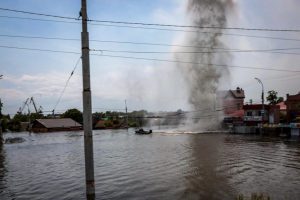
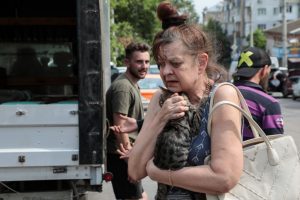
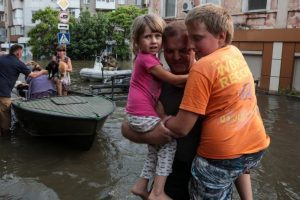
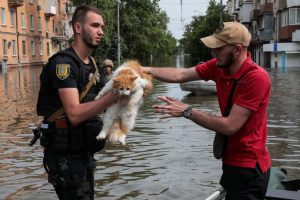
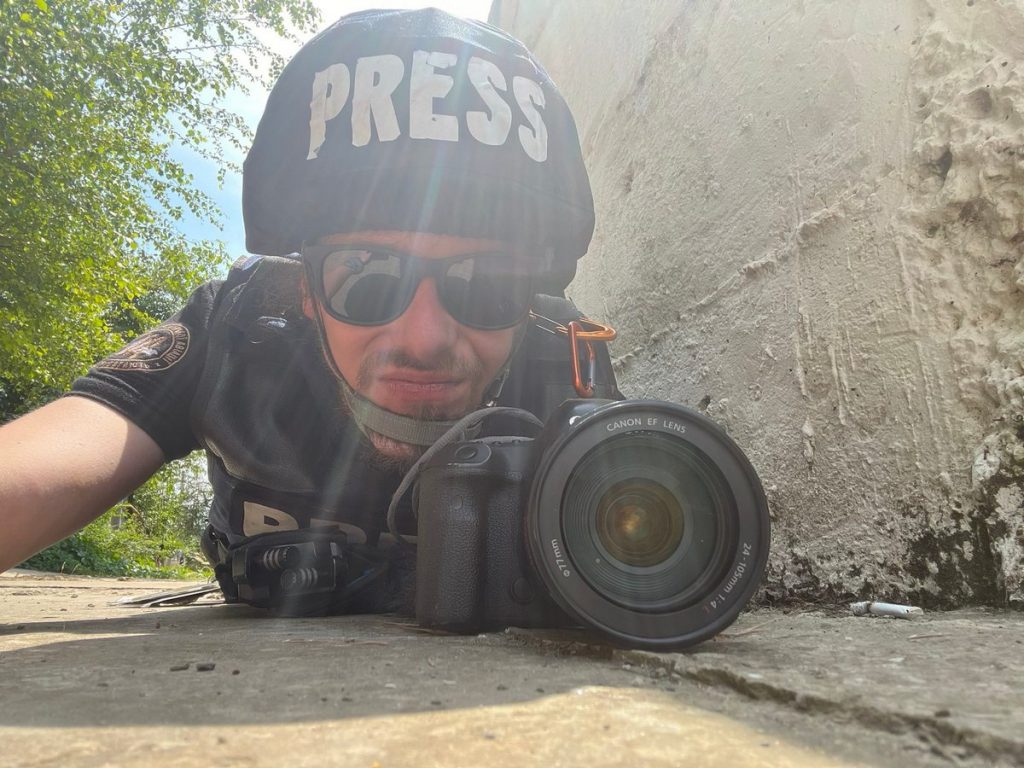
“We ran back several tens of meters and fell next to State Emergency Situations Service (SESU) rescuers,” said Stanyslav Yurchenko. “After several more shells, we thought that the shelling was over. It turned out it did not. We spent more than an hour under fire… A SESU rescuer said that shelling from artillery is “nothing,” but if Grad rockets come, “it will be bad… ” And literally in two minutes, Grad was used at us. We found a small ravine along the road, overgrown with nettles and bushes, in which we lay down, and for about an hour, we could neither return nor go further because as soon as the thought arose that we could get up and make a short run, something immediately flew by.”
That day, journalist Iryna Sampan, who came to the city as a volunteer, also came under fire in Kherson. Due to numerous explosions, on the day of her arrival, she was unable to deliver food and water to 14 elderly people who found themselves in the flooded Korabel (Island) district of Kherson in a high-rise building surrounded by water. Iryna was able to get there only on the second day.
Iryna emphasizes that journalists in Kherson worked in conditions of increased danger.
“It’s one thing when you come under fire on land; it’s another thing on water. In addition to being injured, you can drown,” says Iryna Sampan. “I realized that working in a bulletproof vest and big rubber boots is dangerous for my life. If you’re drowning, you won’t be able to take off the bulletproof vest, especially if it doesn’t have a quick-release system. You decide at your own risk whether or not to put a bulletproof vest on.”
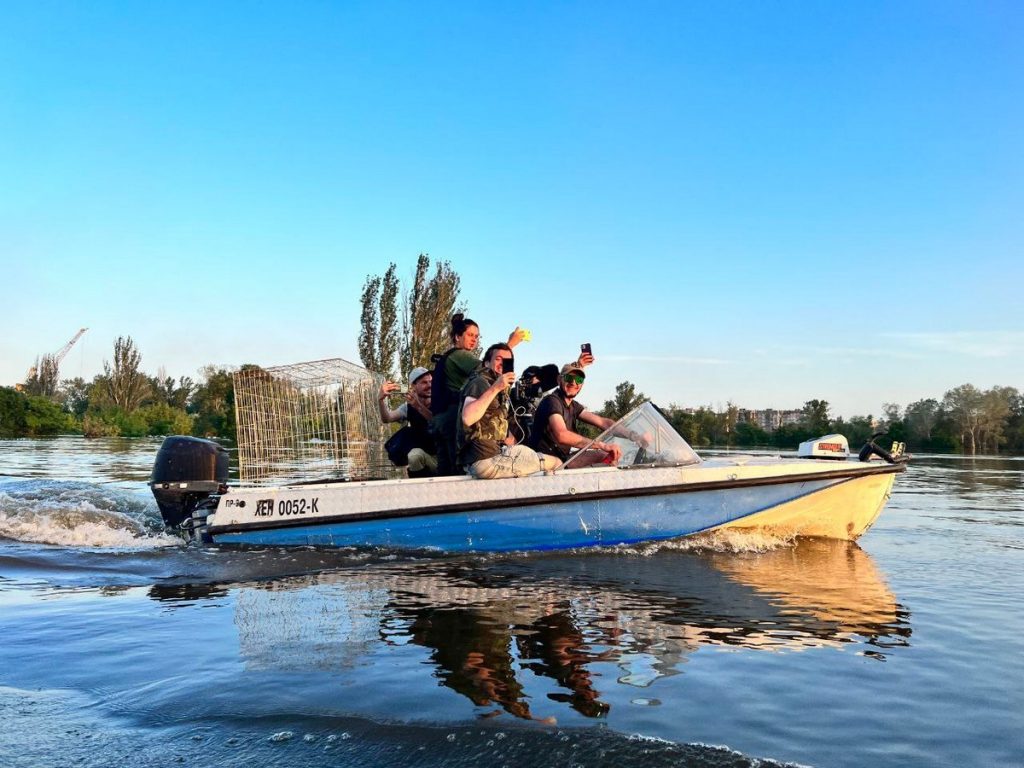
Other journalists had to make such a decision as well
“During the shelling, bulletproof vests were necessary, but when you get into a boat or enter the water, you have to take heavy protection off,” told NUJU journalist Yuliya Surkova. “Four volunteers died in Kherson: due to heavy bulletproof vests, they could not swim out and drowned.”
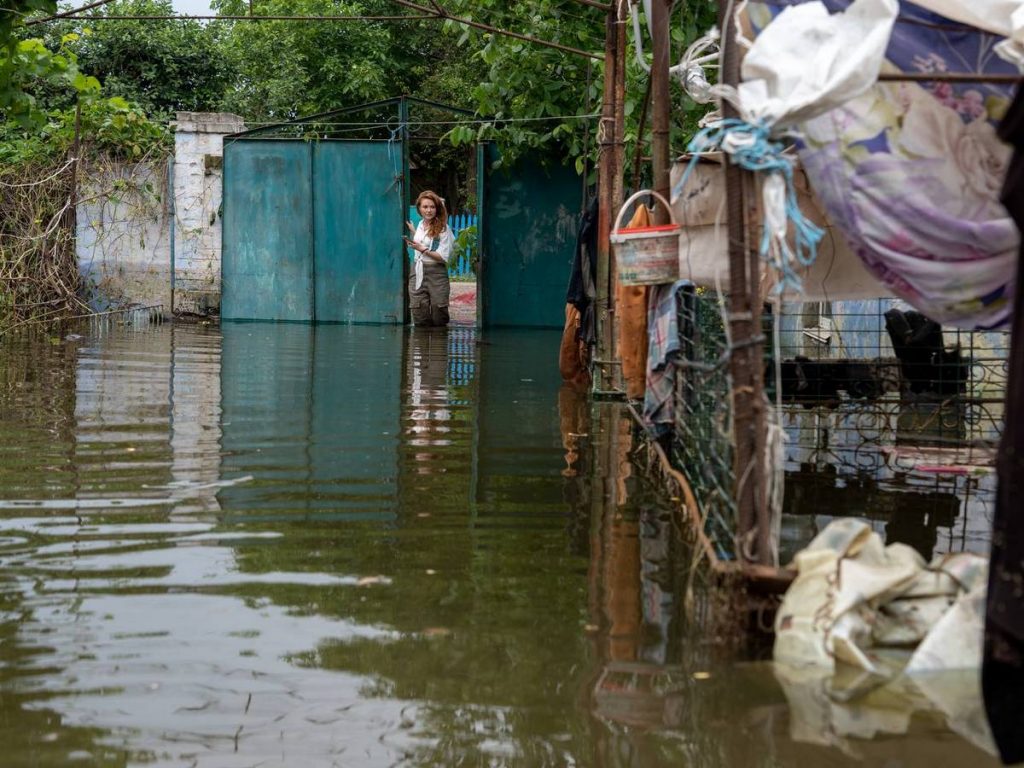
Thanks to Yuliya Surkova, who, by the way, is the mentor of the NUJU educational cycle titled Steps to Sustainable Development, the world learned about the amazing story of the rescue of a family from the flooded Chaika Island near the city of Oleshky, Kherson Region. The mother of two children, Kateryna Krupich, watched in panic as the water rose to her feet. A 40-year-old woman was in a three-story building with her 12-year-old son and four-year-old daughter without food or drinking water. There was only 1.5 meters of dry space left to the ceiling… When the woman heard the sound of a drone above the house, she had hope for rescue. Before the evacuation, the drone returned to Kateryna‘s house several times to drop water and food through her window. And the most important news was a note saying that the evacuation would definitely take place. The family was rescued on the evening of June 7 by a boat of Ukrainian rescuers, who were brought to the house by the drone of a 31-year-old border guard with the call sign ‘Santa.’

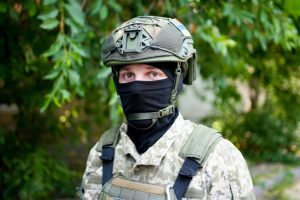
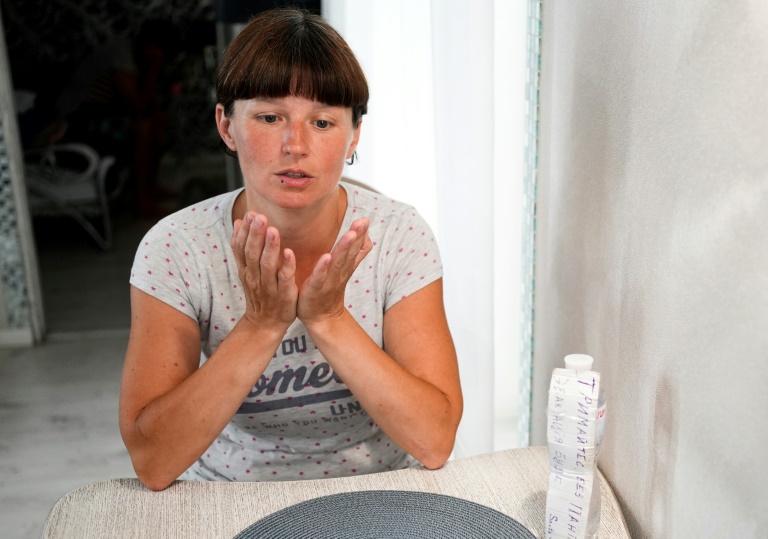
During the shelling on Kherson’s Korabelna Square, the apartment building in which the graduate editor of Ukrainian Radio Marharyta Laznyk lives was seriously damaged. A projectile flew into the flooded house, piercing the roof, technical floor, and the neighbors’ ceiling… Ms. Laznyk’s detached house in the suburbs of Kherson was also damaged: a projectile hit a neighboring house, and the windows of the journalist’s house were broken…
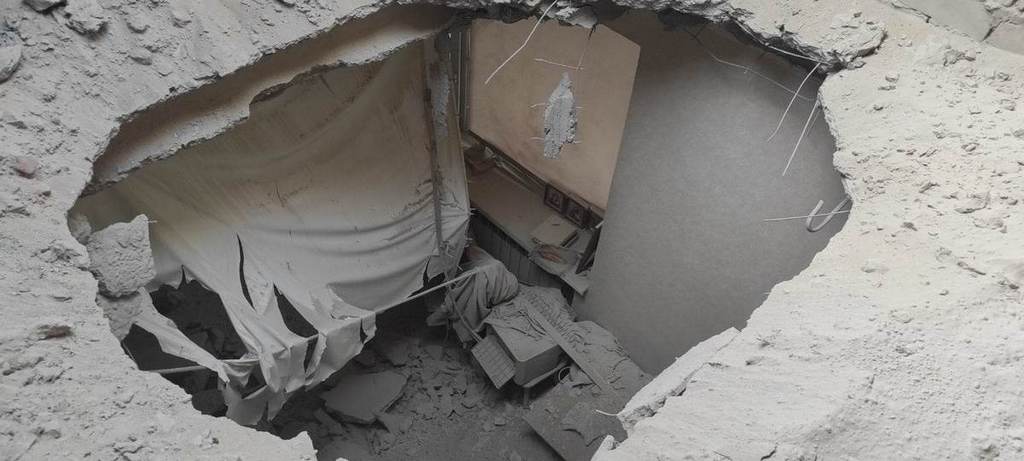
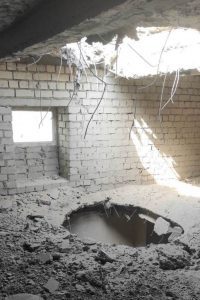
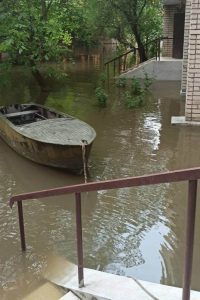
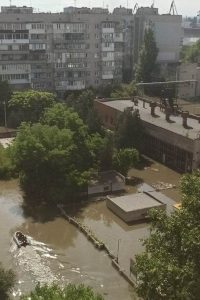
Journalists are left without books and archives
A journalist from Kherson, who wanted to stay anonymous, lives in a high-rise building in the Korabel (Island) neighborhood. On June 6, when the Russians blew up the Kakhovka HEPP, he left in the morning on a ride to another part of Kherson to visit friends. Due to a serious illness and age, he could not work in extreme conditions, but he watched with horror through social networks what was happening to his and the surrounding houses. When the water receded, the journalist was able to visit his apartment briefly.
“I was walking across the railway bridge,” he told NUJU. “It was the only way, not by water. Thank God they missed it. When I approached, the bridge was fired at by mortars – they are fired from the opposite side of the Dnieper River… The bridge was not hit; only the place nearby was hit. The police and military ordered to wait out the shelling behind the house. When the shelling stopped, we, those from the island (there also were 20 people gathered), were let in in groups of 3 people with an interval of 5 minutes. They said that if someone was injured so that others could pull them out.”
Judging by the traces on the walls, the water stood at a height of more than half a meter in the apartment for several days. It destroyed all stocks of products, household appliances, and furniture. The situation is even worse in the apartment of the journalist’s parents, who left Kherson earlier, fleeing the war. Furniture was also destroyed there. Due to the moisture, the shelves on which the dishes stood collapsed. The entire floor was covered with a layer of silt; several dead fish remained in the hall.
“But I feel sorry for the books the most,” says the journalist. “More than 500 volumes were lost… These are my best friends; I remember every page in them since childhood…”

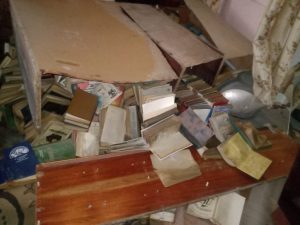
The journalist told the story of his neighbor: he could not leave because he did not find one of his two cats in time, and when one of them came, it was already impossible to get out of the Island neighborhood. The neighbor moved most of his belongings to the upper floors and became the only inhabitant of the first floor, which was destroyed only by the floor and furniture…
“I ate canned food for almost two weeks, and only now was he able to eat normally,” the journalist said.
Another journalist from Kherson, Olena Maliarenko, who lives in a private house, also suffered severe consequences from the flood. The water in the house stood at a height of two meters: furniture, household appliances, clothes, books, and journalistic archives were destroyed; plantings in the yard were significantly affected. The house is built of shellstone bricks, and it is unknown how this material will behave in the future.
“We managed to save two cats, a computer, my documents, a change of clothes, and two embroideries…” Olena Maliarenko told NUJU. “Now I live with my friends. I am trying to put an order in my house. I threw away household appliances and spoiled food and left the furniture to use as firewood. I have yet to disassemble half the room where the library was… I was advised not to touch the books until they get dry – saving at least part of them will be possible. Let’s see… I’m really sorry for the manuscript of my late mother, Halyna Maliarenko – we co-authored some books with her: she came up with interesting plots, and I typed the text. Some records remained after her, and it is not yet known whether they survived the flood.”
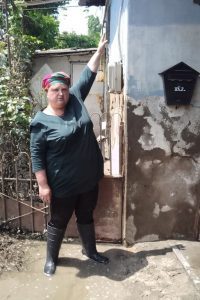
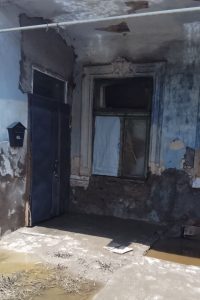
At first, they tried to kill us, then to burn us, and now they are drowning us in water
The severe consequences of the Kakhovka HEPP explosion affected not only Kherson and the region but also the neighboring Mykolayiv Region. The water that flooded the Kherson Region, receding, filled the basin of the tributary of the Dnieper River, Inhulets, and the river, seemingly contrary to common sense, flowed in the opposite direction, at the same time overflowing its banks.
This was told to the NUJU by TV journalist Mykhailo Sharkov, who visited the villages on the bank of Inhulets near Snihurivka, Mykolayiv Region.
“People woke up to a noise that resembled the sound of a waterfall,” the journalist said. “This was the moment when Inhulets began to spread out. And the more the water fell in the Dnieper, the more it rose in Inhulets…”
The villages of Pavlo-Mariyanivka and Yevhenivka, affected by the flood, are not far from Kherson, but many roads are flooded, and to get there, journalists had to detour through Mykolayiv and Snihurivka, then drive in the direction of Kryvyi Rih, and finally through mined fields to Pavlo-Mariyanivka.
“As a result of the flooding of the roads, few people went there, and there was real trouble in the villages,” said Mykhailo Sharkov. “This is a rich agricultural region, and people lived there quite well before the war. But the Russians came – and a part of the village was occupied; there were fierce battles for many months. After liberation, people took out loans for reconstruction – and here is a new problem… Local residents say: “First they killed us during the occupation, then they tried to burn us with shelling, and now they are drowning us with water.” Poor people…”

Today, when the water receded, the residents of the flooded areas are returning home. In their souls – sadness for what was lost, hatred for the occupiers, and… despair. It would seem that their homes have somehow been preserved, but it is impossible to live there, and those affected by the flood joined the number of millions of displaced people left without everything that once made their world.
“The Grant store, where I bought bread and sometimes, when Andrii and I went from work, some interesting toy for him, my yard, my house, the basement of my house we hid from shelling in (now our wooden bench floats there, on which we sat for more than one hour), my street, my Kherson….” journalist Marharyta Laznyk sadly observes the destroyed city.
“I used to think that hell must smell like sulfur,” journalist Roman Chornomaz, who went to the front and was killed in battle with the enemy, said in one of his interviews. “In fact, that’s not right; it smells like fire: burnt things, buildings, furniture, people’s homes – everything accumulated by people for many, many years, and then at one point burned to the ground. This is what the hell smells like.”
Today, another infernal smell appeared in Ukraine: river silt…
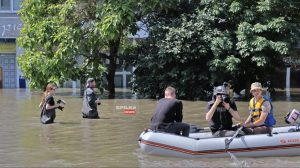
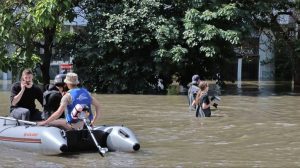
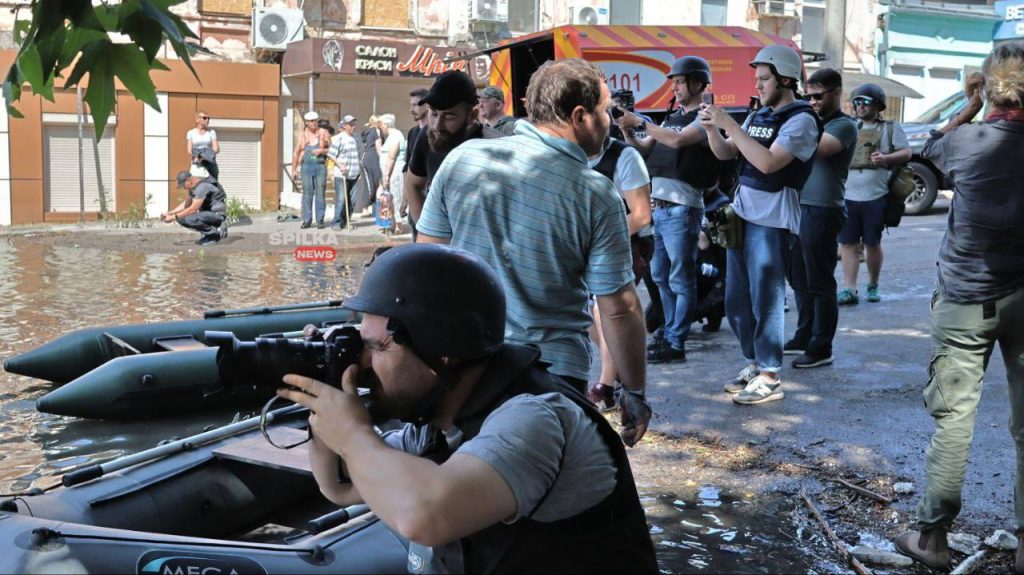
As earlier reported, the NUJU‘s Journalists’ Solidarity Centers aid media workers who suffered as a result of Russian aggression, including colleagues who have losses due to the flooding of the Kakhovka HEPP. Also, through the network of the Centers, protective equipment is provided to journalists who go on business trips to unstable regions of Ukraine.
Maksym Stepanov, NUJU Information Service

 THE NATIONAL UNION OF
JOURNALISTS OF UKRAINE
THE NATIONAL UNION OF
JOURNALISTS OF UKRAINE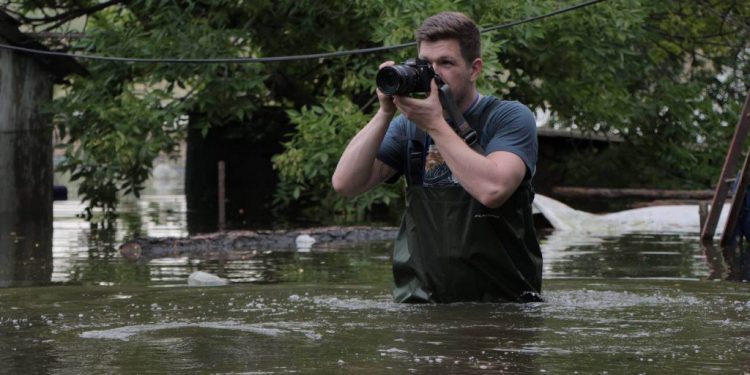
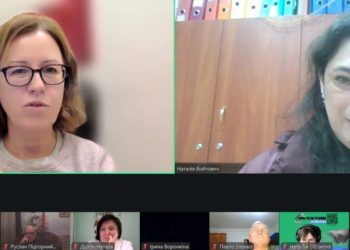
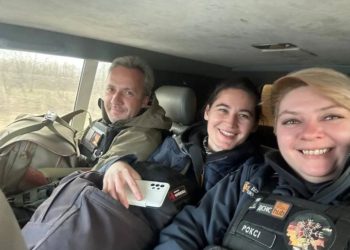
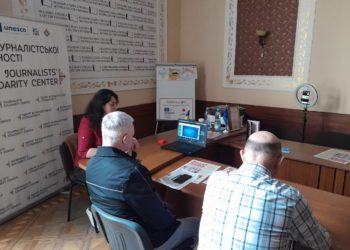
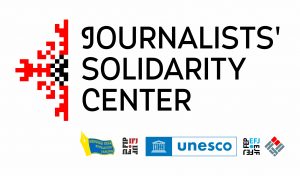
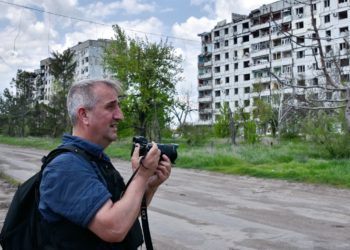







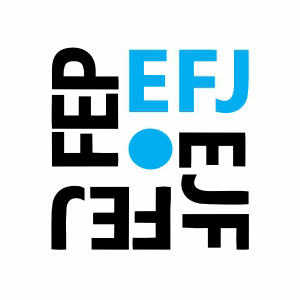



Discussion about this post